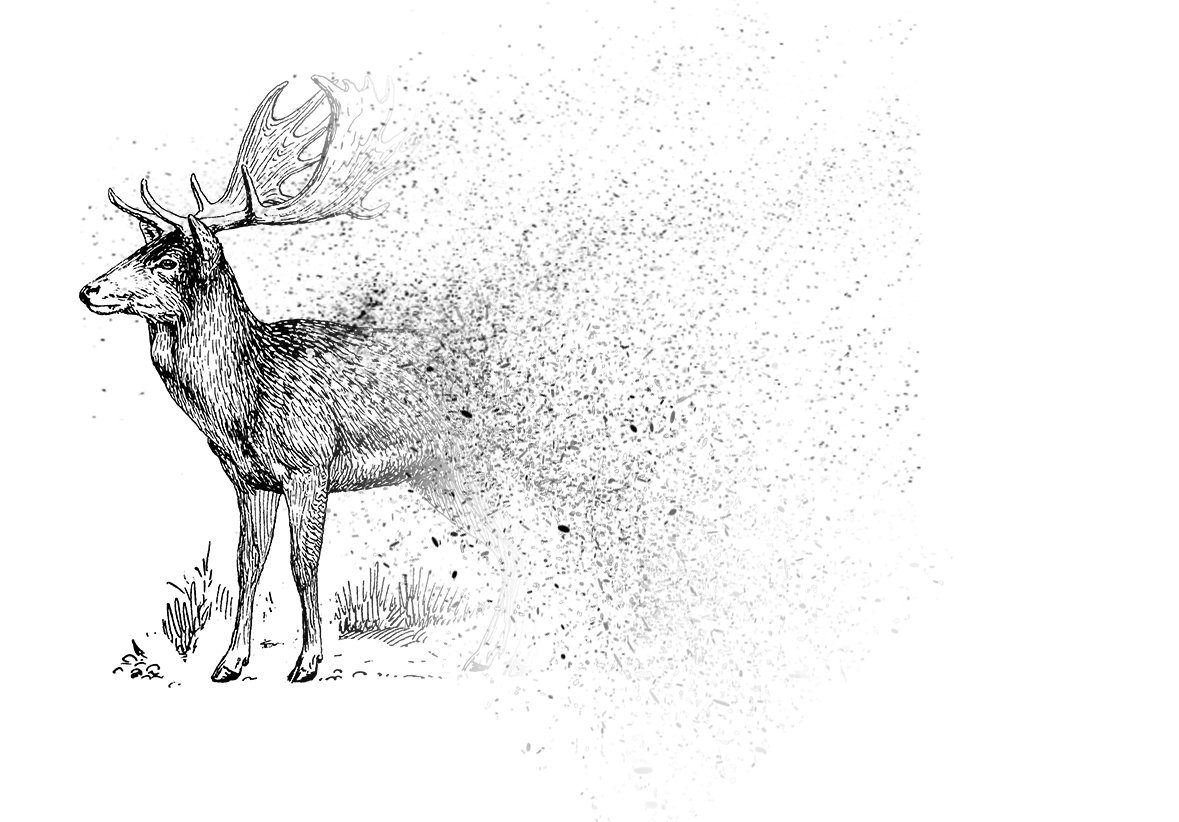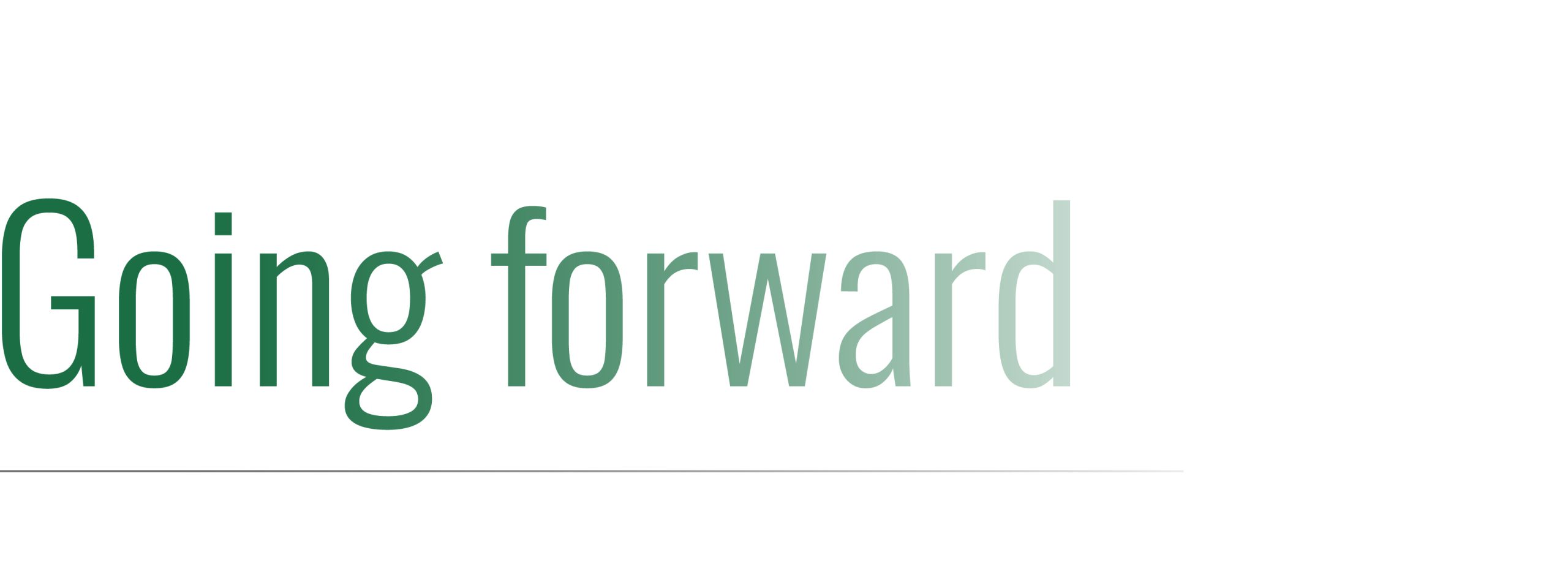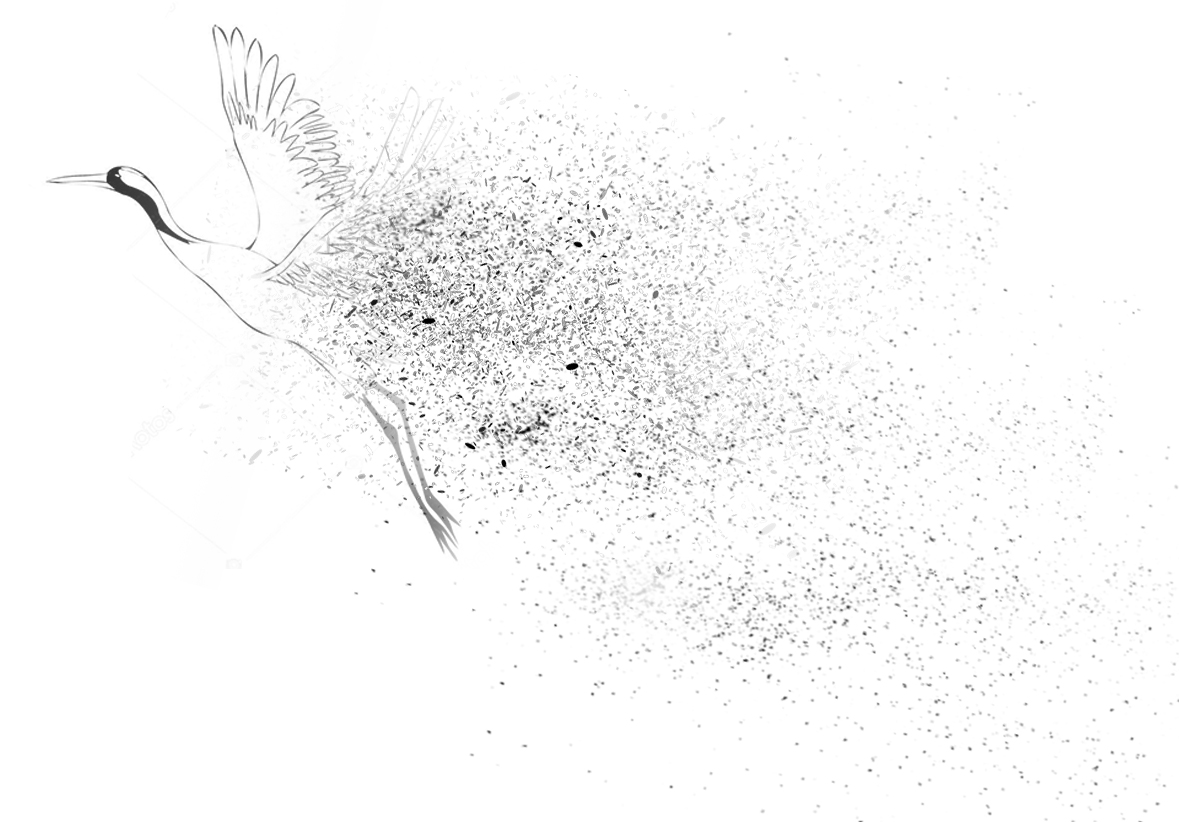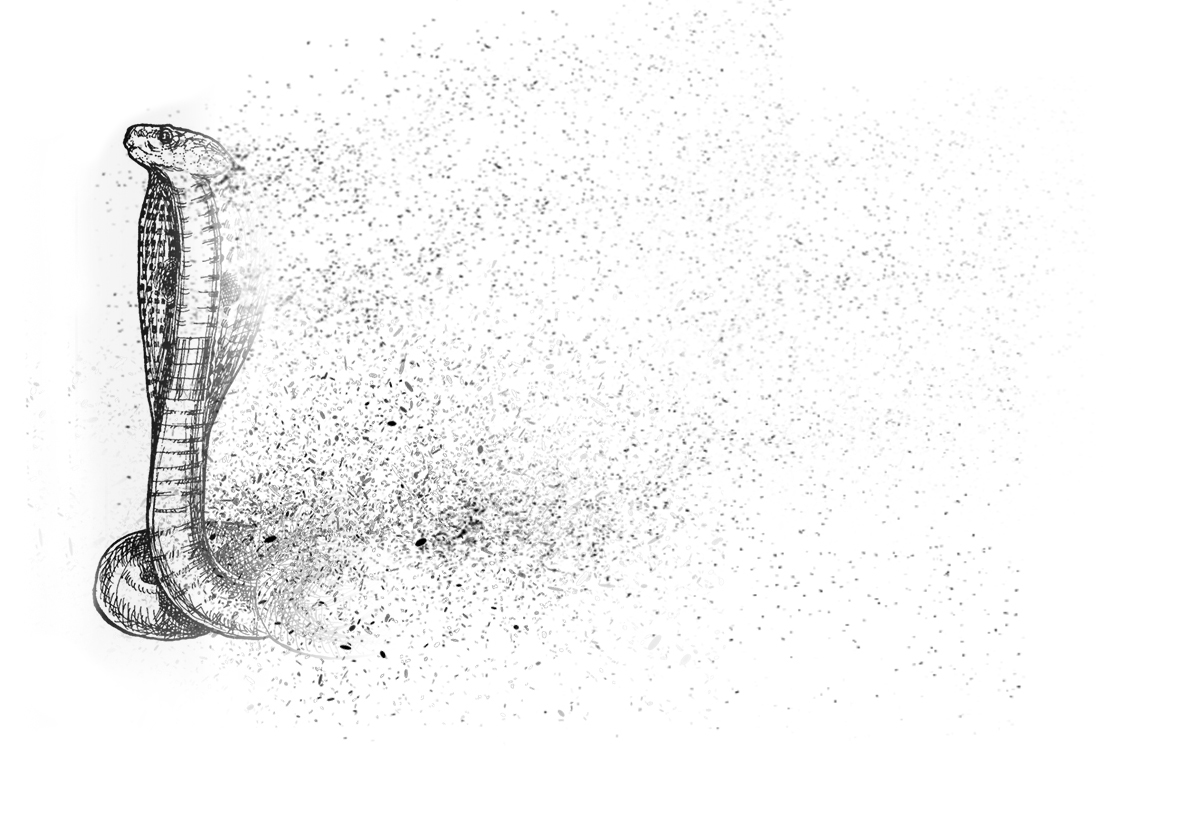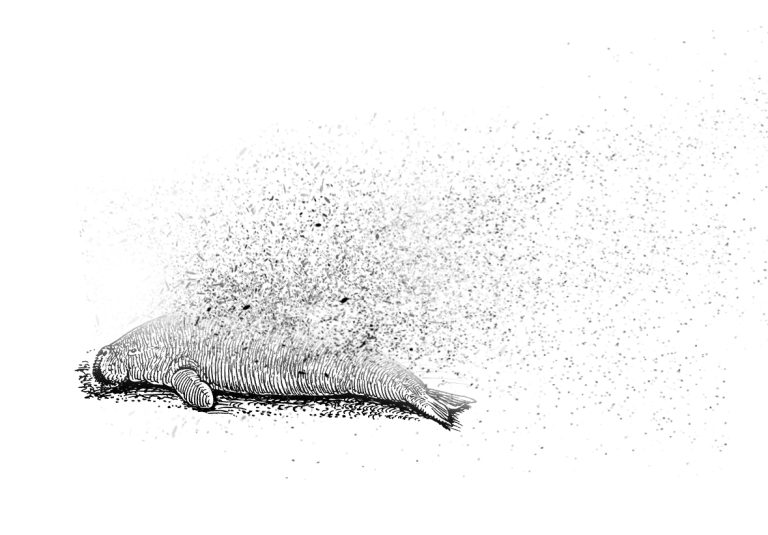
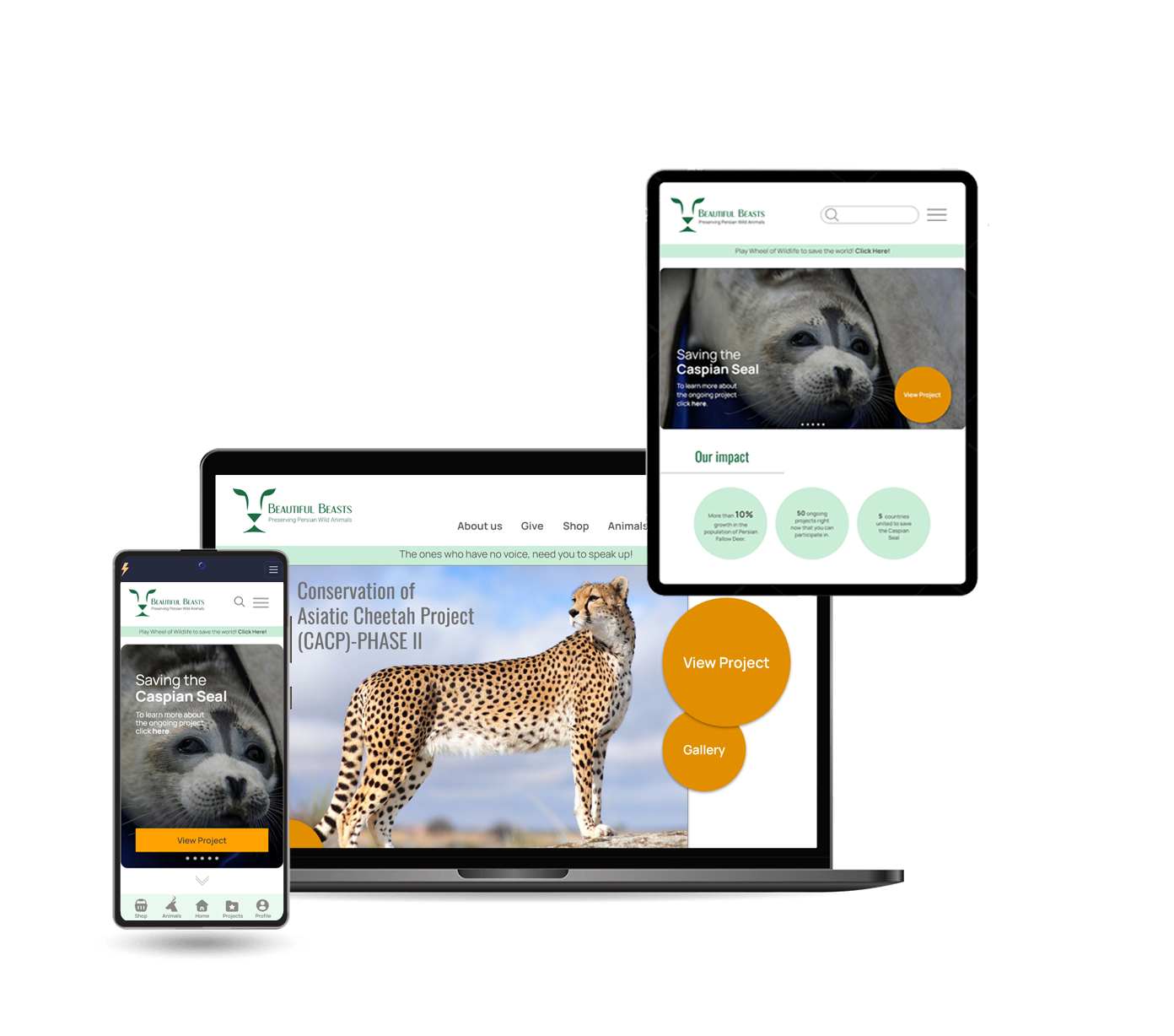
UX case study for
Designing App and Responsive Website for Beautiful Beasts
By Tina Hoveyda
Coursera, Google UX Design certificate program
August 2023

Beautiful Beasts is dedicated to preserve Persian endangered wildlife.
This app is designed to educate people and encourage them to participate in projects to help preserve wildlife and be more environmentally conscious. The primary target users are 18-50 years old, any gender, nature-enthusiasts, who share and interact online and are present in social media.
August 2023
UX/UI designer leading the Beautiful Beasts app and responsive website design
Conducting interviews, creating empathy maps, personas, competitors analysis, generating contents, sitemap, affinity map, patterns and insight analysis, paper and digital wireframing, low and high-fidelity prototyping, conducting usability studies, accounting for accessibility, iterating on designs and responsive design, visual design and copywriting.
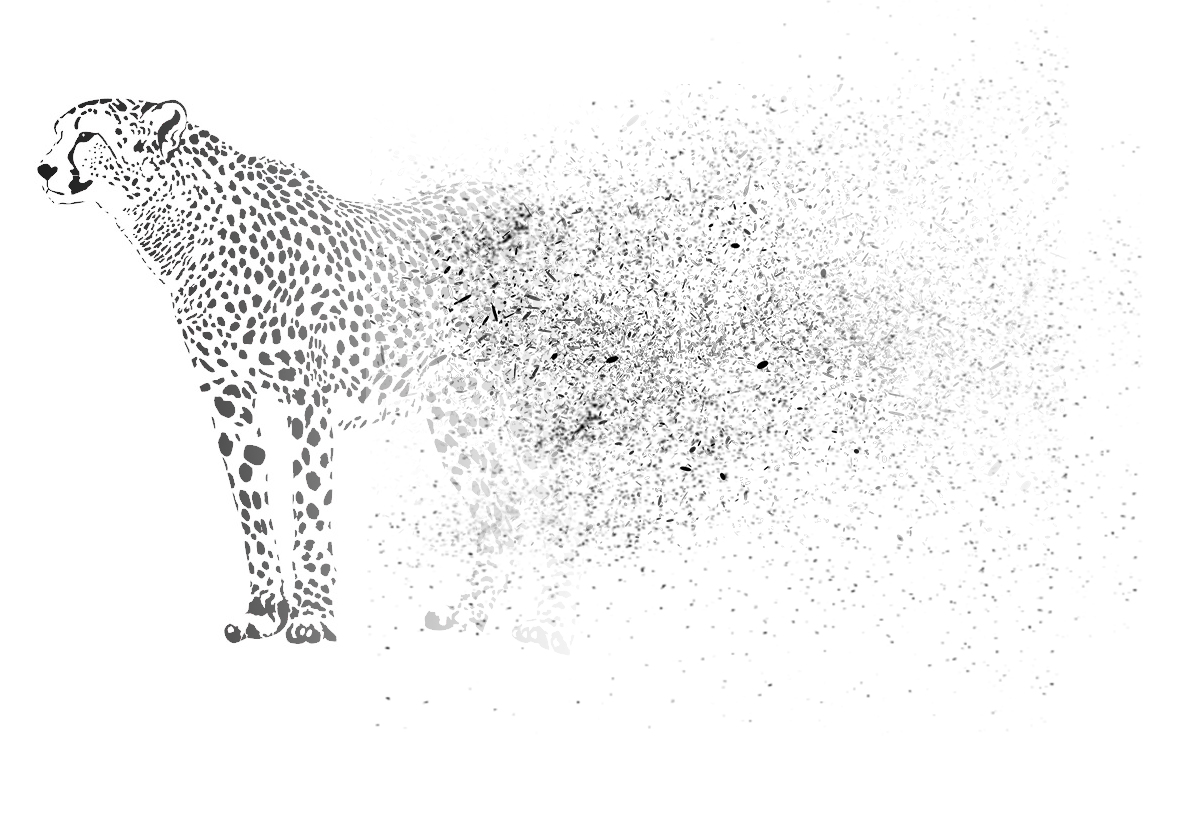
A great number of Iran’s mammal and bird species are endangered. As the government keeps neglecting the ever-growing catastrophe, there is a great need to raise awareness about the preservation of the wildlife and educate and encourage people to take part in preventing this crisis.
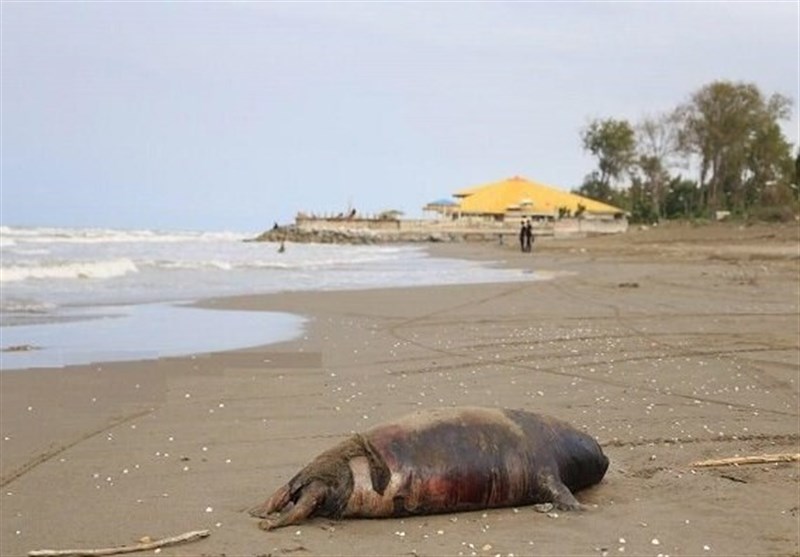
Death of a Caspian Seal, reason still unknown.
Design an app that encourages people to participate in wildlife projects and raises awareness about the importance of preservation.

An Asiatic Cheetah killed in a road accident.

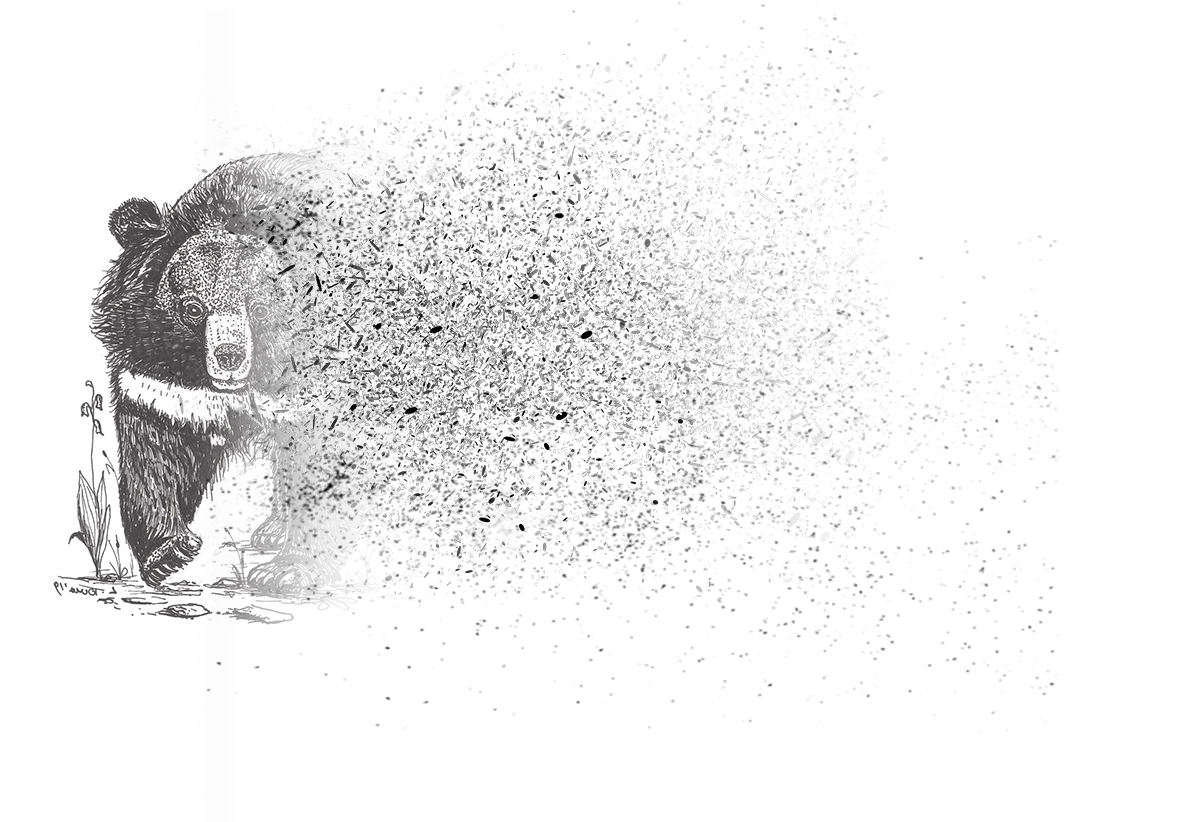
Interviews with environmental conscious participants revealed their frustration about the government and people’s ignorance of the future of the wildlife. The need for education and raising awareness to prevent the crisis should be addressed. Also, nature enthusiasts seek for projects to directly participate in and make an impact. The need for transparency and clarity about finances of the organizations goes without saying. With this app I seek to make “saving the wild animals” an interesting experience and encourage users to learn more, share with and educate others.
Some dedicated wildlife websites were too dense with content and users had a hard time navigating through their destination.
Although most wildlife apps are visually rather cohesive, they lack different language option.
One main reason that users abandoned the experience was lack of engagement and the grieving tone of the brands. People were dissuaded to get involved.
A main concern was lack of clarity on projects and financial transparency regarding donations.
Age:
Education:
Hometown:
Family:
Occupation:
40
University degree
Athens, Greece
Married, no kids
Marketing manager
Bahar is a successful marketing manager who works in a well-known corporation. She’s an active environmental conscious and very passionate about wildlife. She volunteers, donates and supports NGOs and is determined to educate and inform people as much as she can about environmental crisis and preserving endangered species. She uses her laptop most as the source of her digital communications.
Bahar is an environmentally conscious, busy marketing manager, who needs to raise awareness about wildlife, because she wants endangered species to be preserved.
Nicki
Age:
Education:
Hometown:
Family:
Occupation:
28
College degree
Pompton Lakes, NJ
Living with partner
Freelance artist
Nicki is a freelance artist and social activists. They are a nature enthusiast and a professional camper. They are also a blogger and believes in making changes through social media. Since Nicki is mostly on the move, mobile phone is their main source of digital
communication.
Nicki is a blogger and nature enthusiast, who needs clarity on how donations are spent, because they want to get actively involved in causes and invite people to participate.
I created a user journey map of Bahar’s experience using the site to help identify possible pain points and improvement opportunities.
Bahar’s user journey
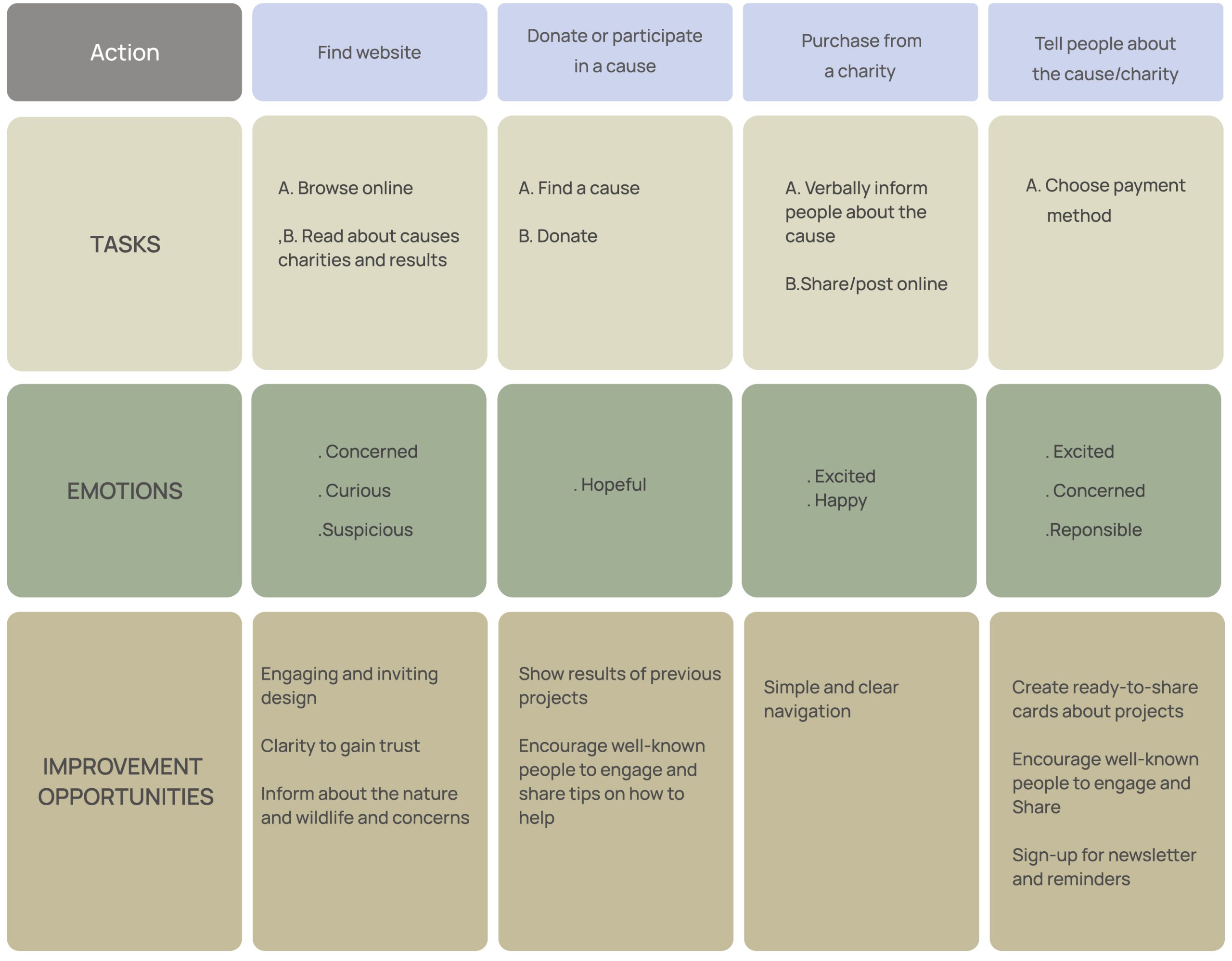
An audit of a few competitor’s products provided direction on gaps and opportunities to address with the Beautiful Beasts app.
Goal: Comparing Competitive apps/websites
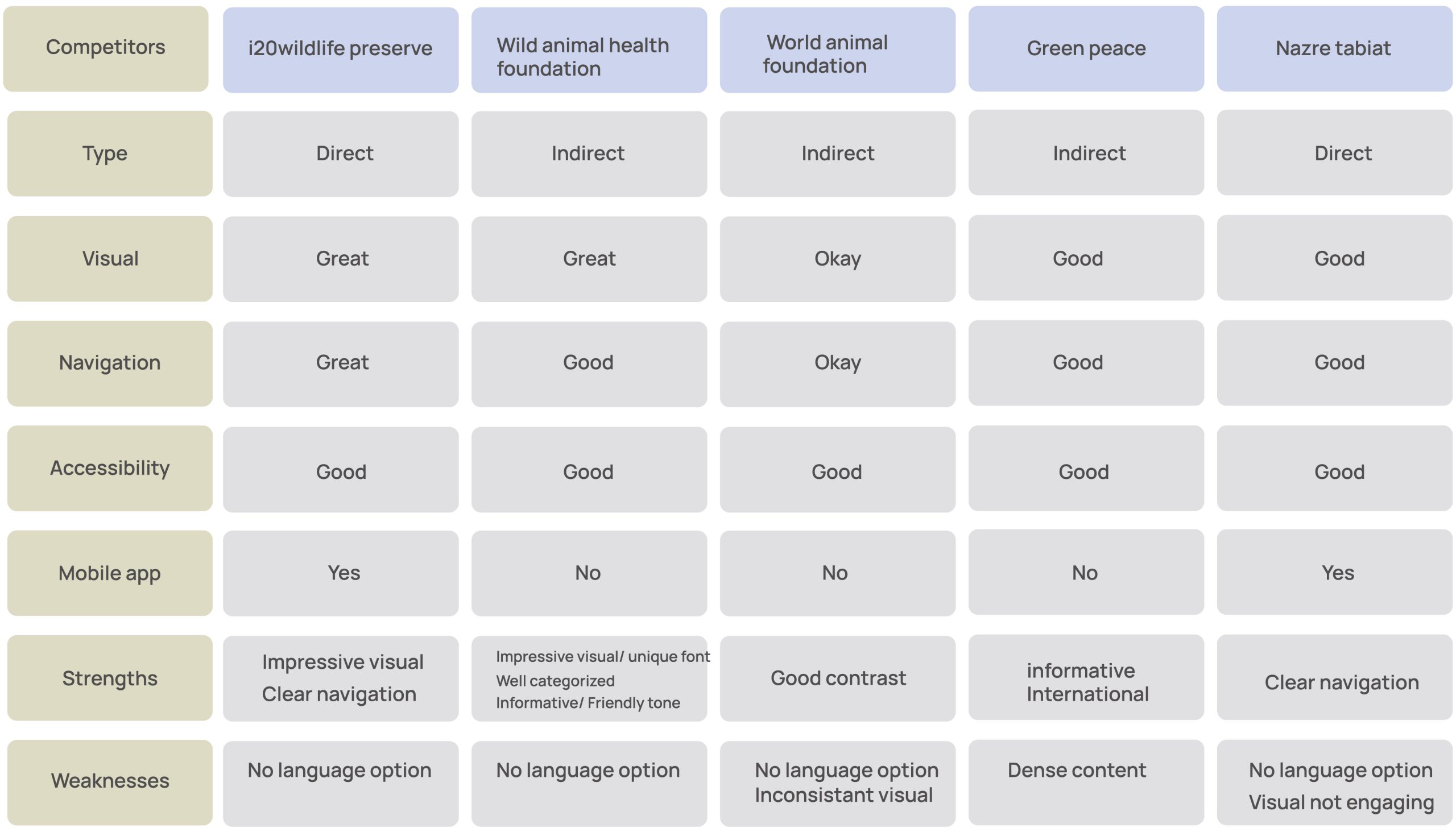
I did a crazy eights ideation exercise to come up with ideas for how to address gaps identified in the competitive audit. My focus was specifically on creatively engaging and educating users, and clarity on finances.
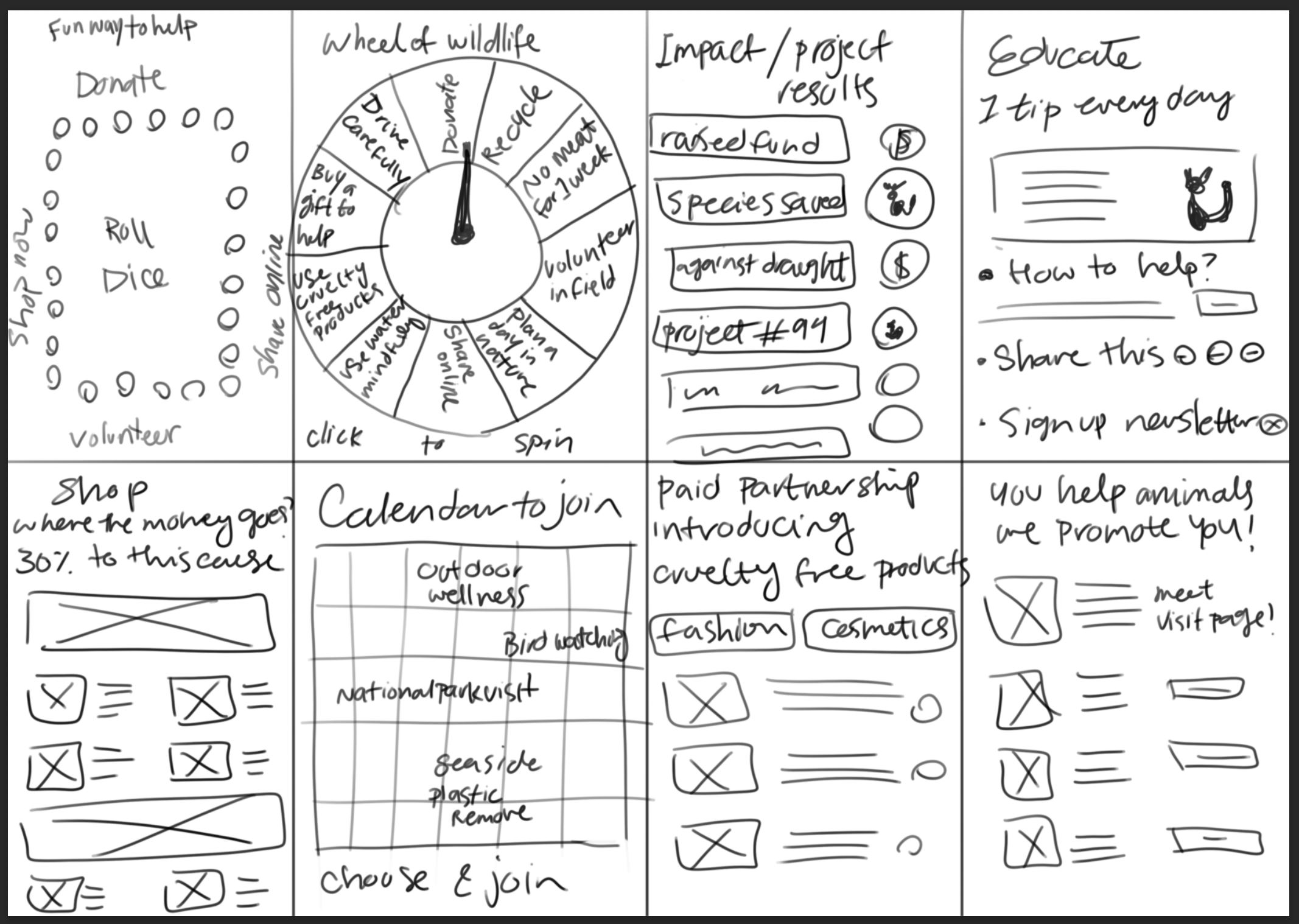

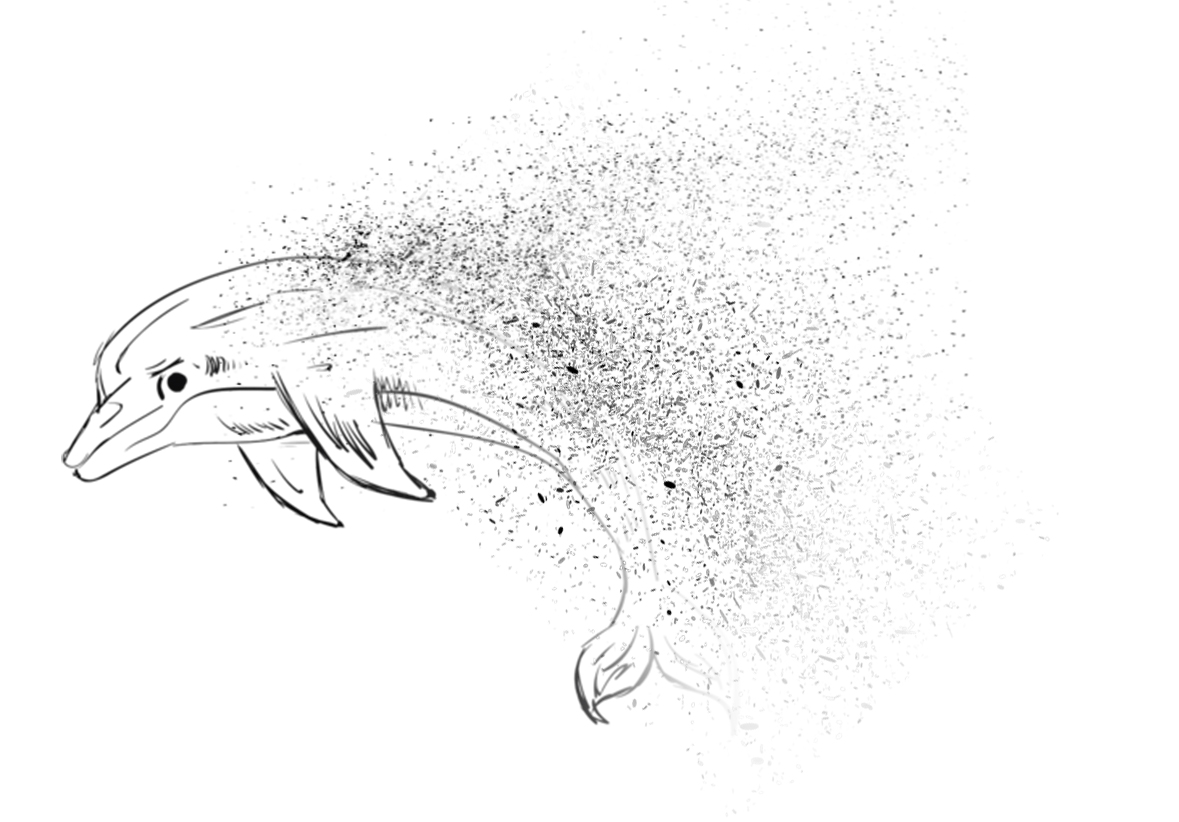
I started sketching wireframes on paper for each screen of my app to address the pain points and categorize the data to create a simple flow and joyful experience.
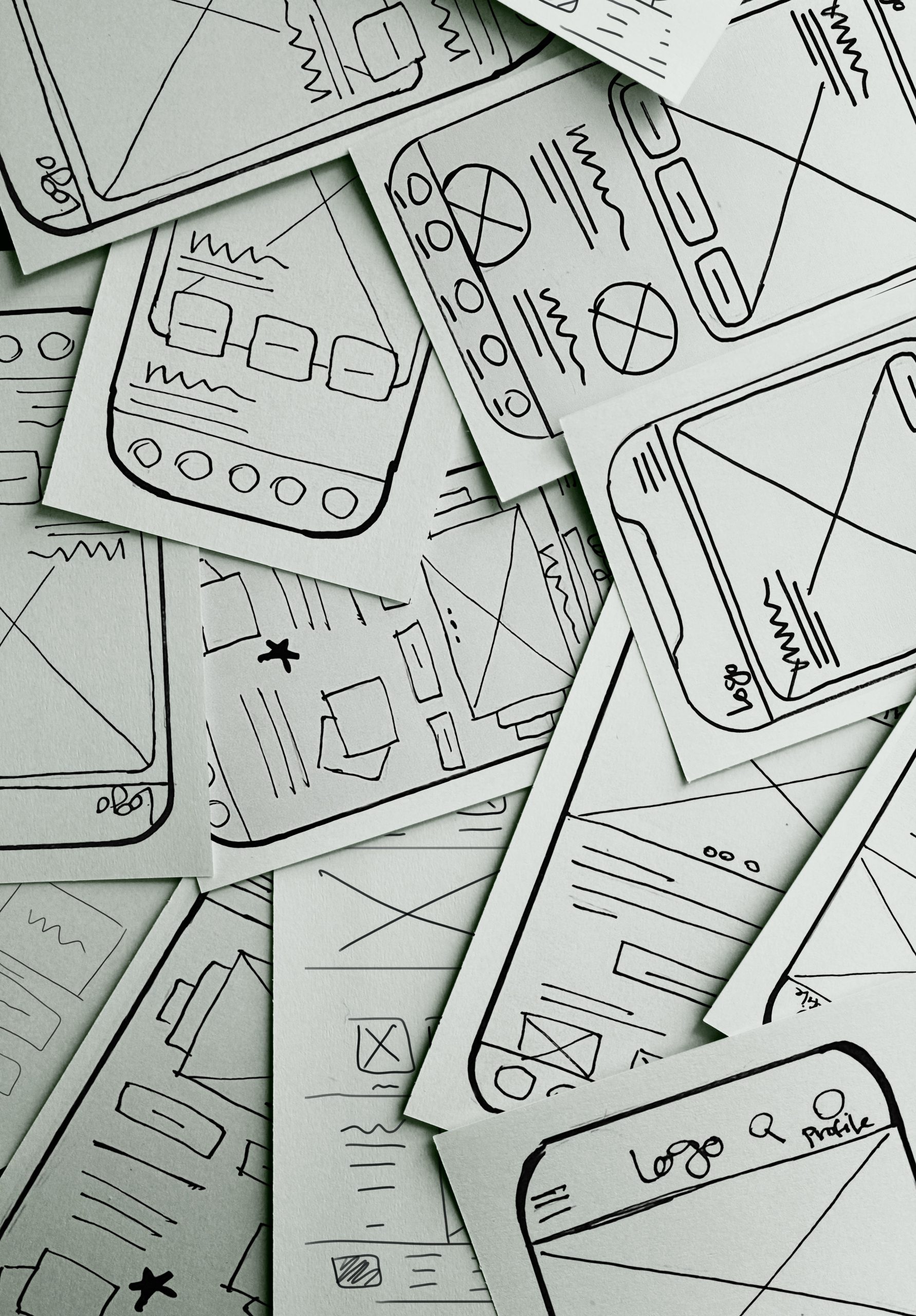
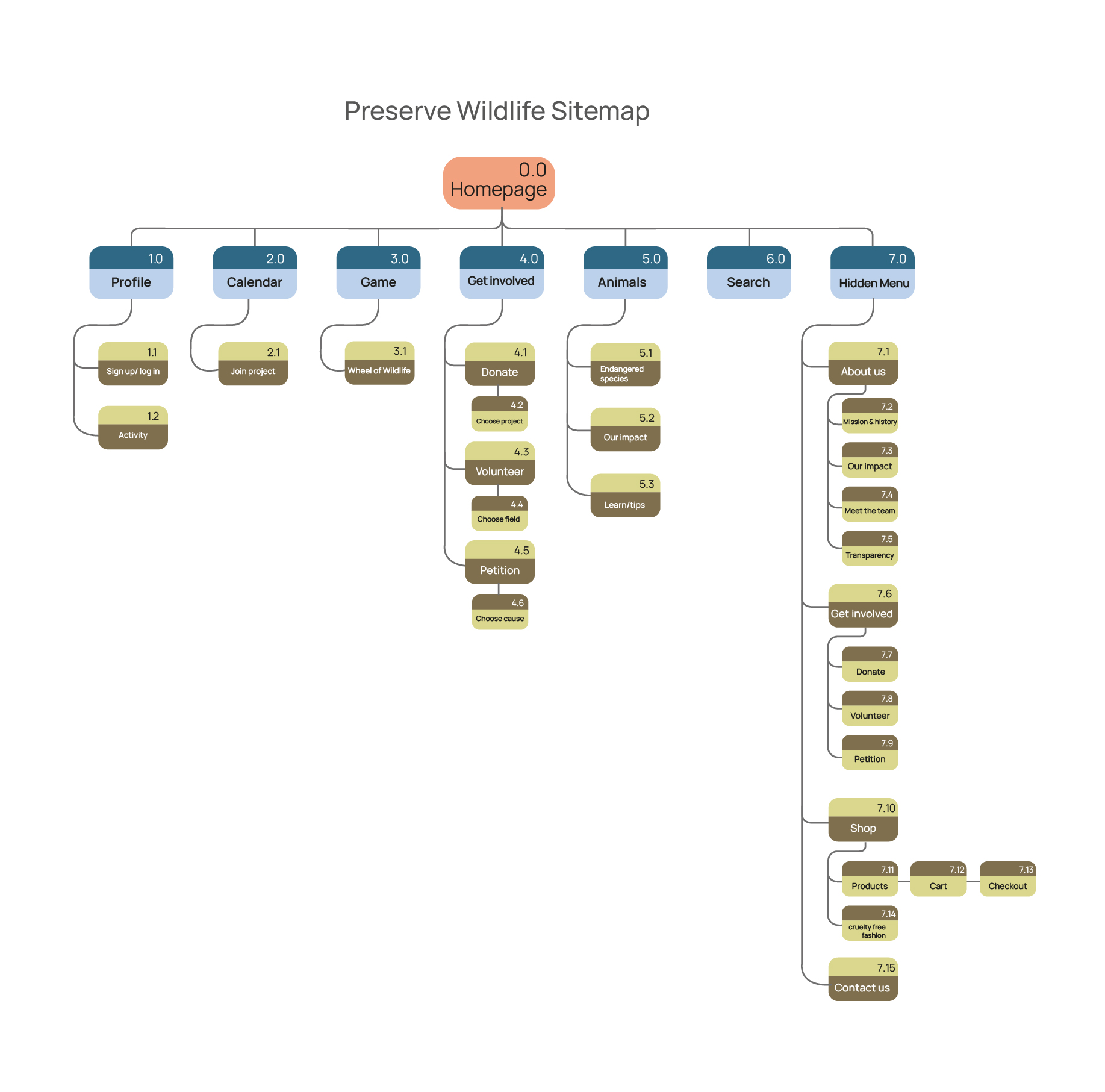
After ideating and drafting some paper wireframes, I created the initial designs for the Beautiful Beasts app. These designs focused on creative ways to encourage people to participate and share more to spread the words about wildlife.
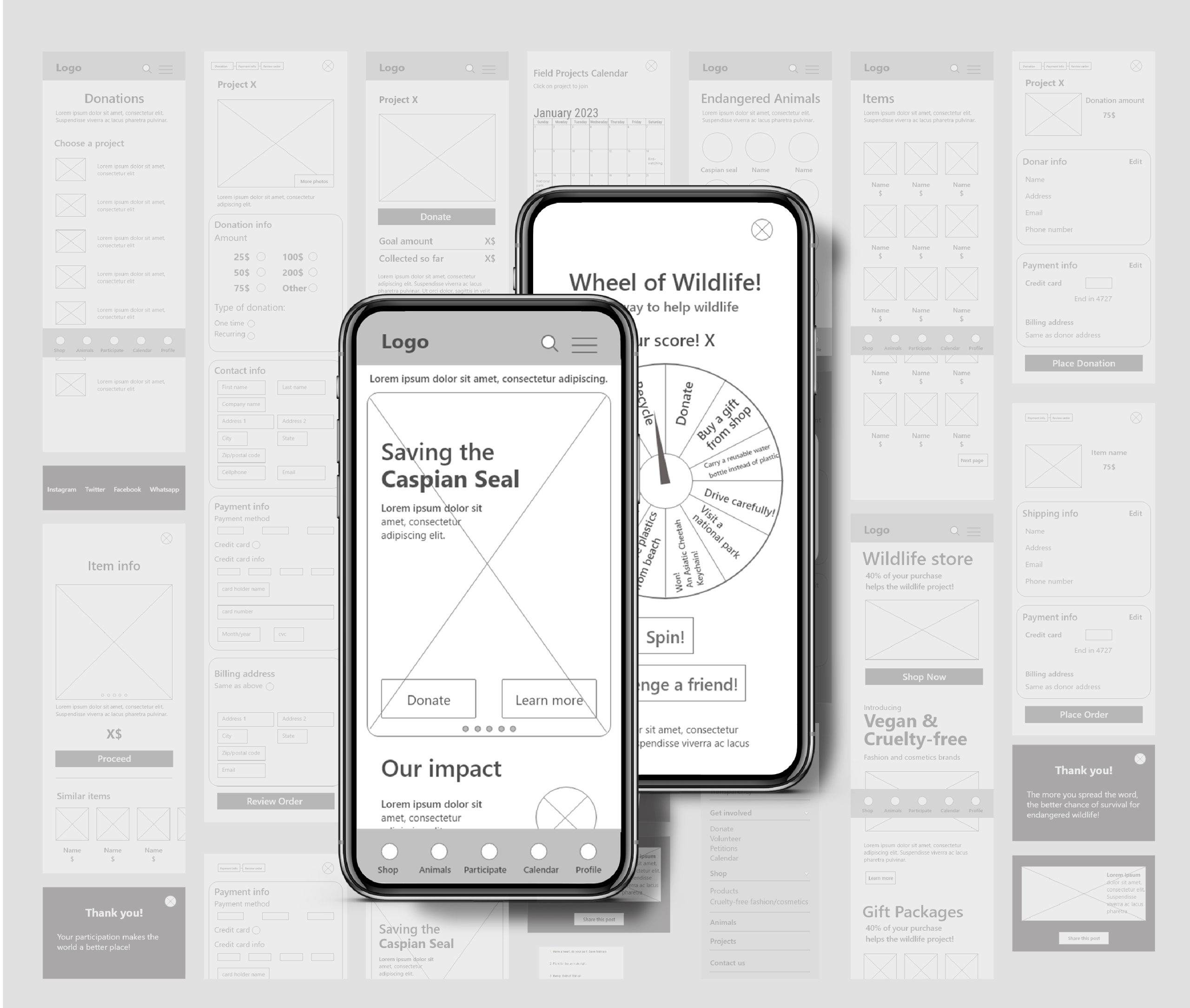
To prepare for usability testing, I created a low-fidelity prototype that connected the user flows of Placing Donations, Sharing projects, Shop, Game and Project Calendar.
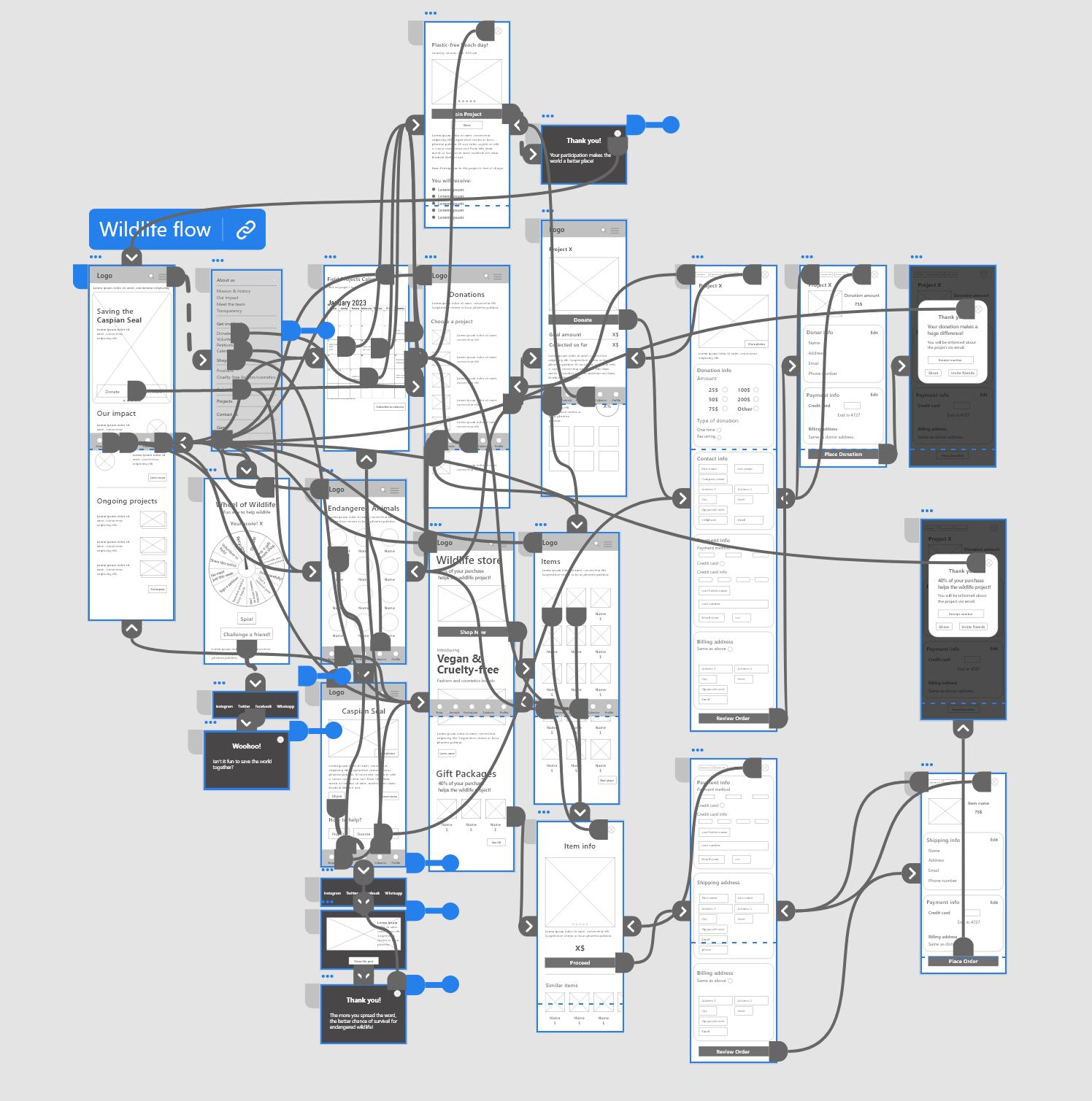
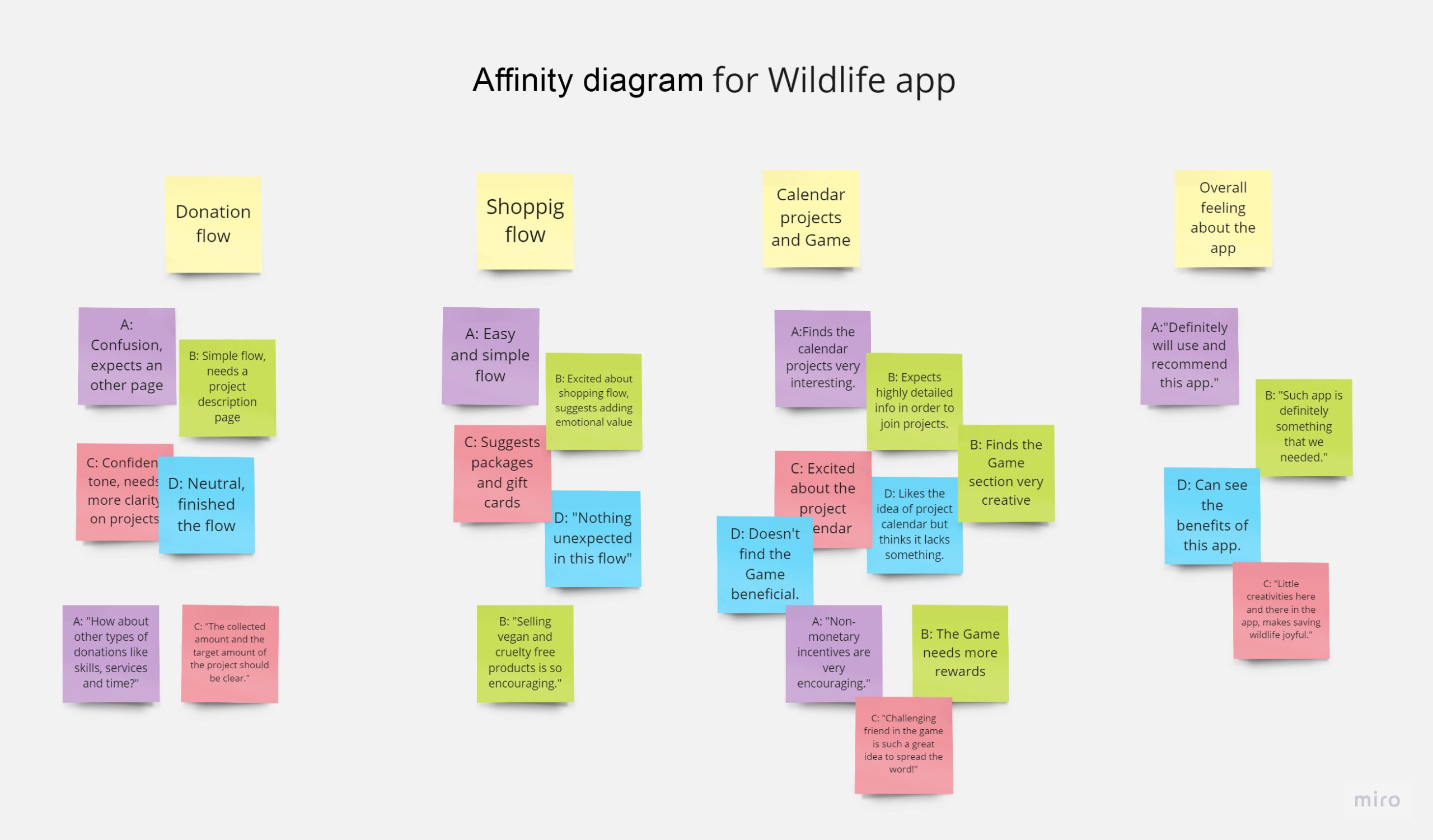

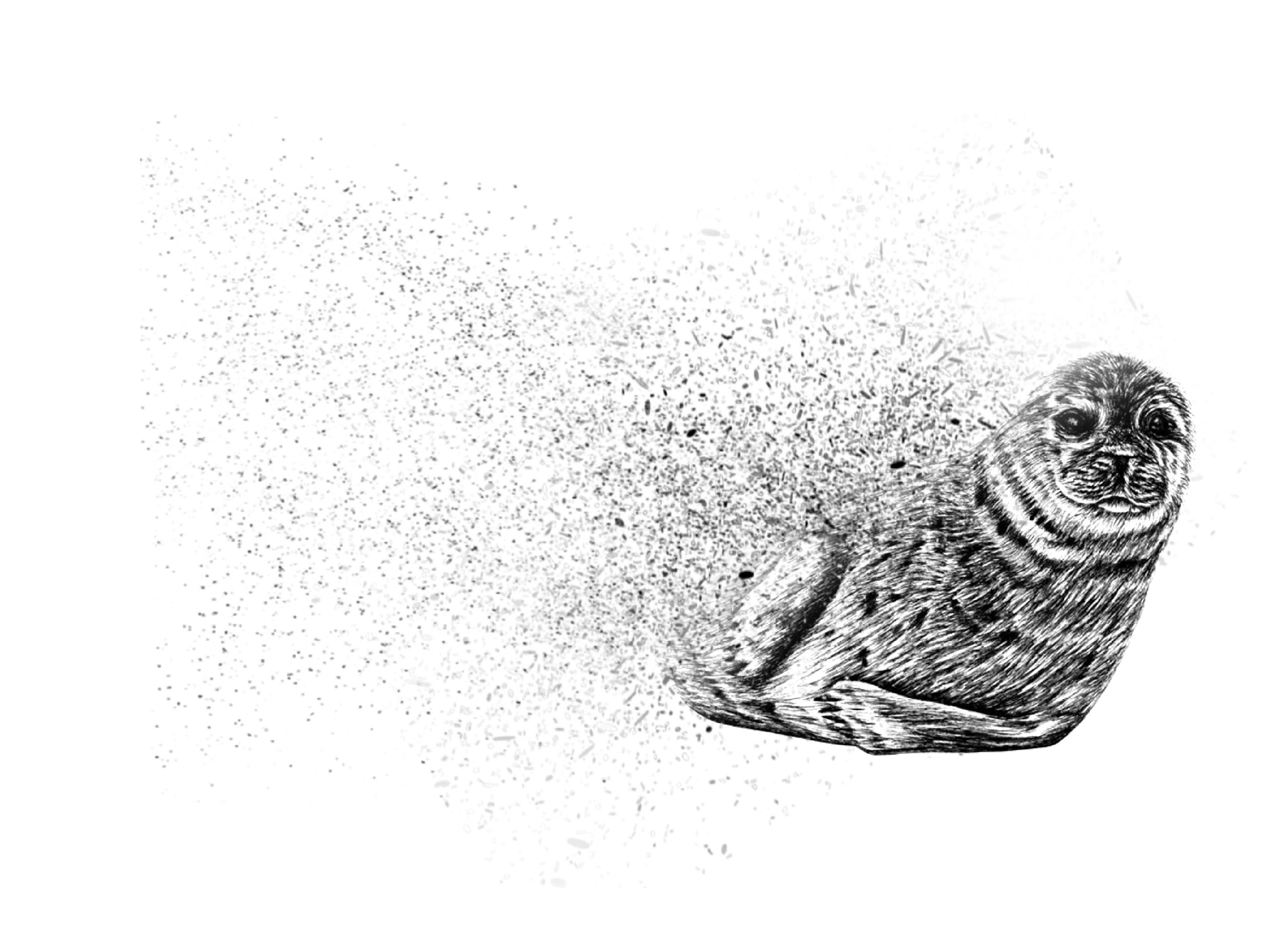
Logo design contains a minimal design of a cheetah’s features combined with a strong font to represent these majestic creatures and the color green as a reminder of protection and preservation.
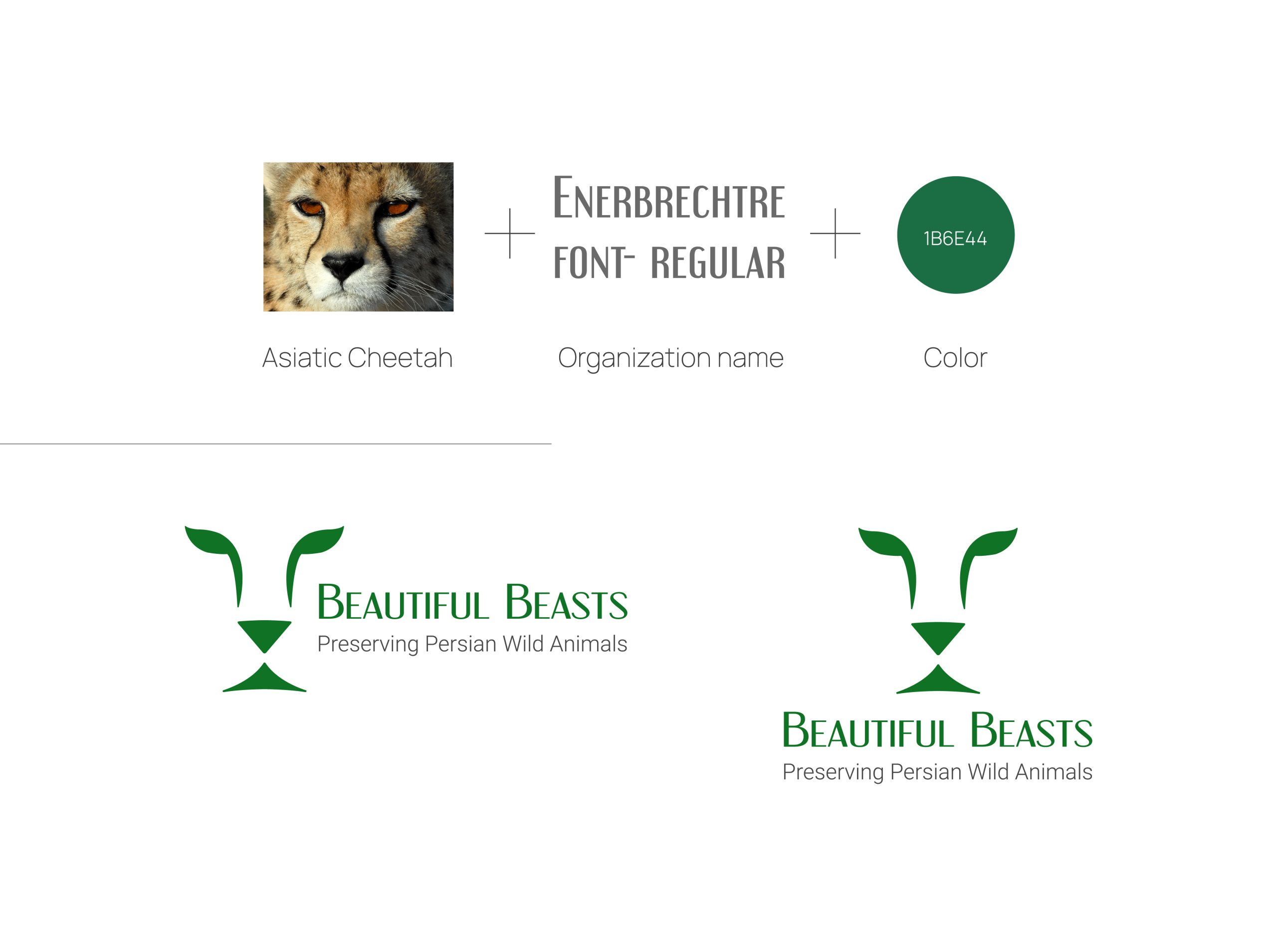
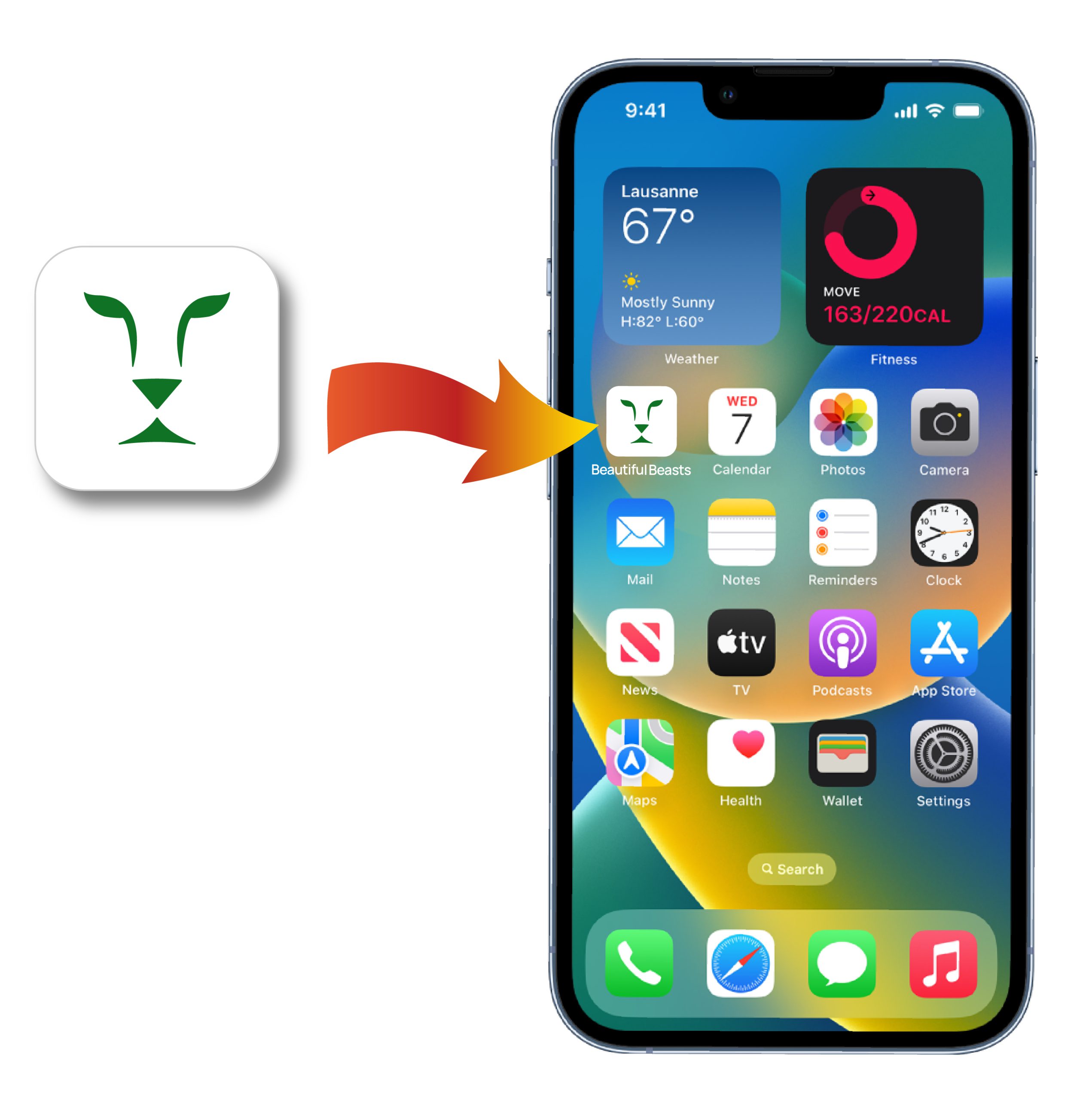
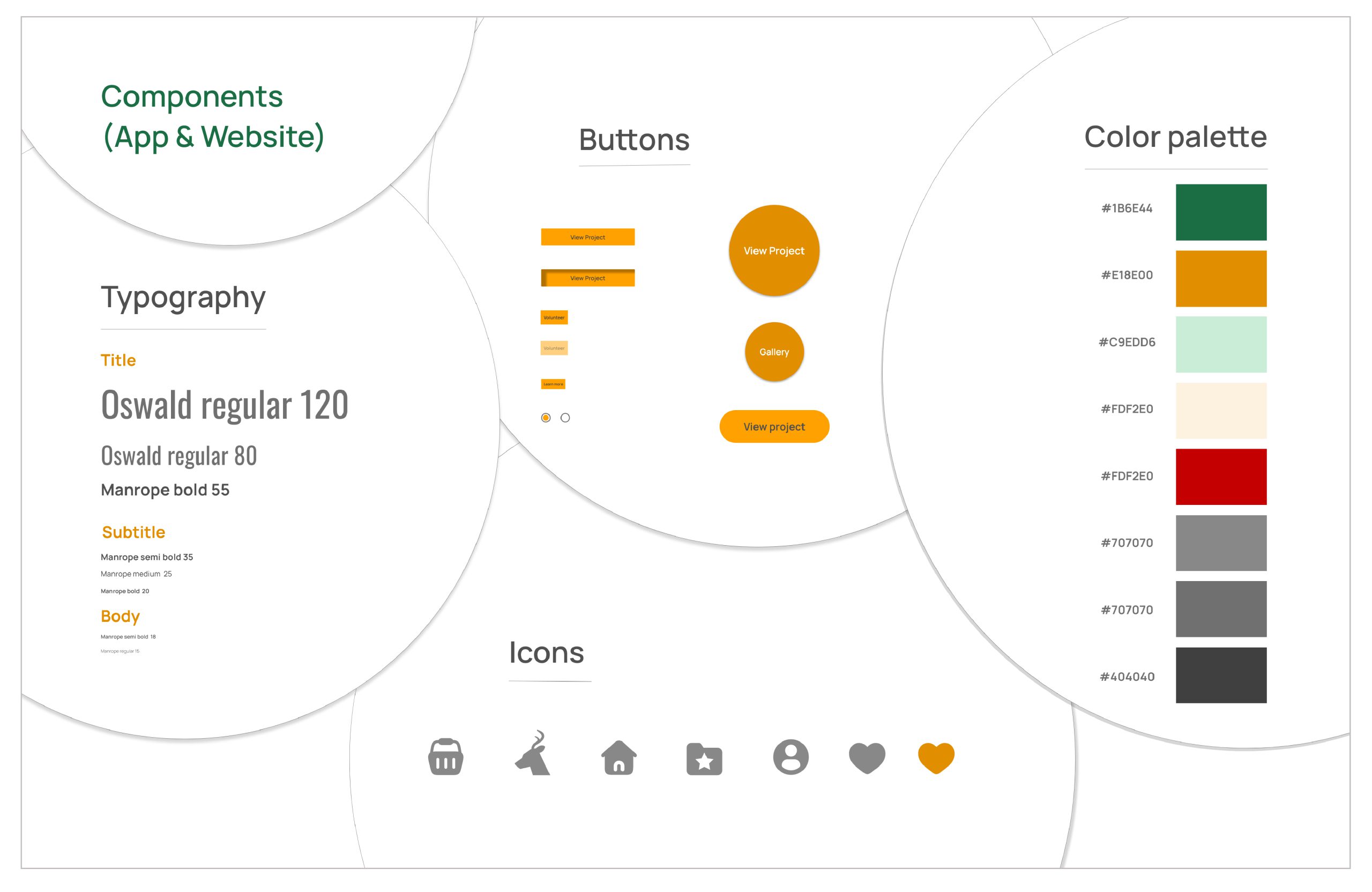
Based on the insights from
the usability studies, I added a screen between the Project title and Placing donation, to deliver detailed information about the project, so the user would be well-informed. Per user’s request, monetary and non-monetary rewards and
incentives were added to
the field project participations and the Game section.
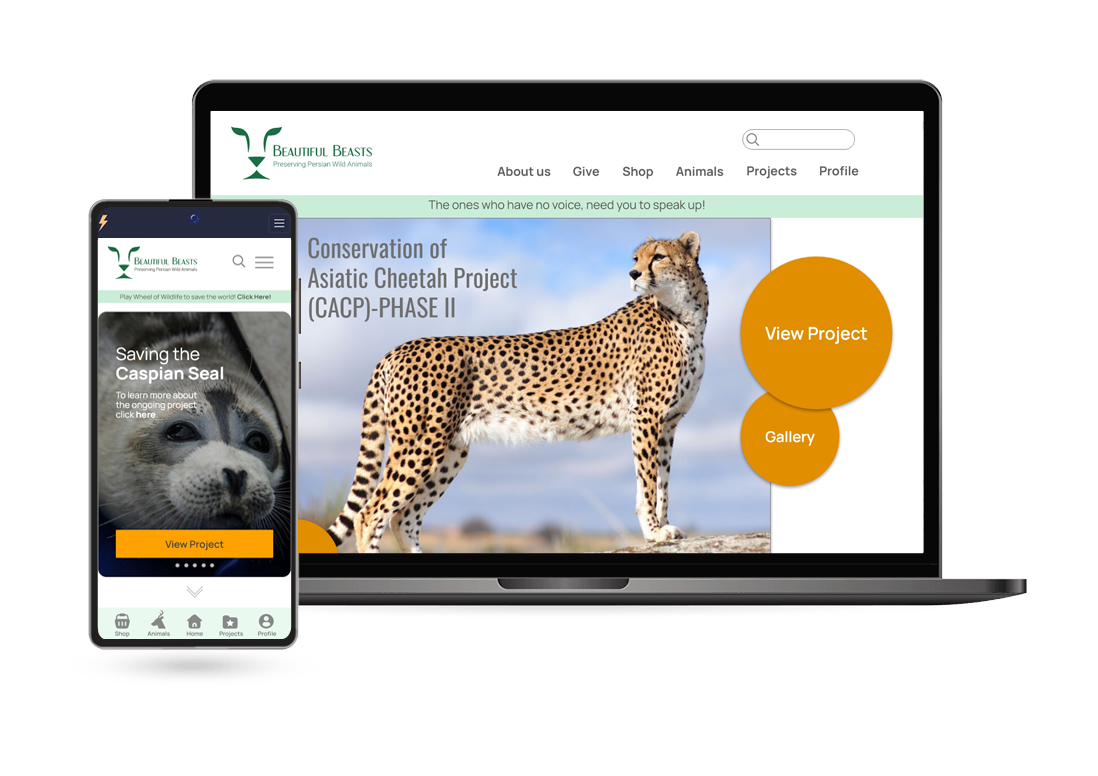
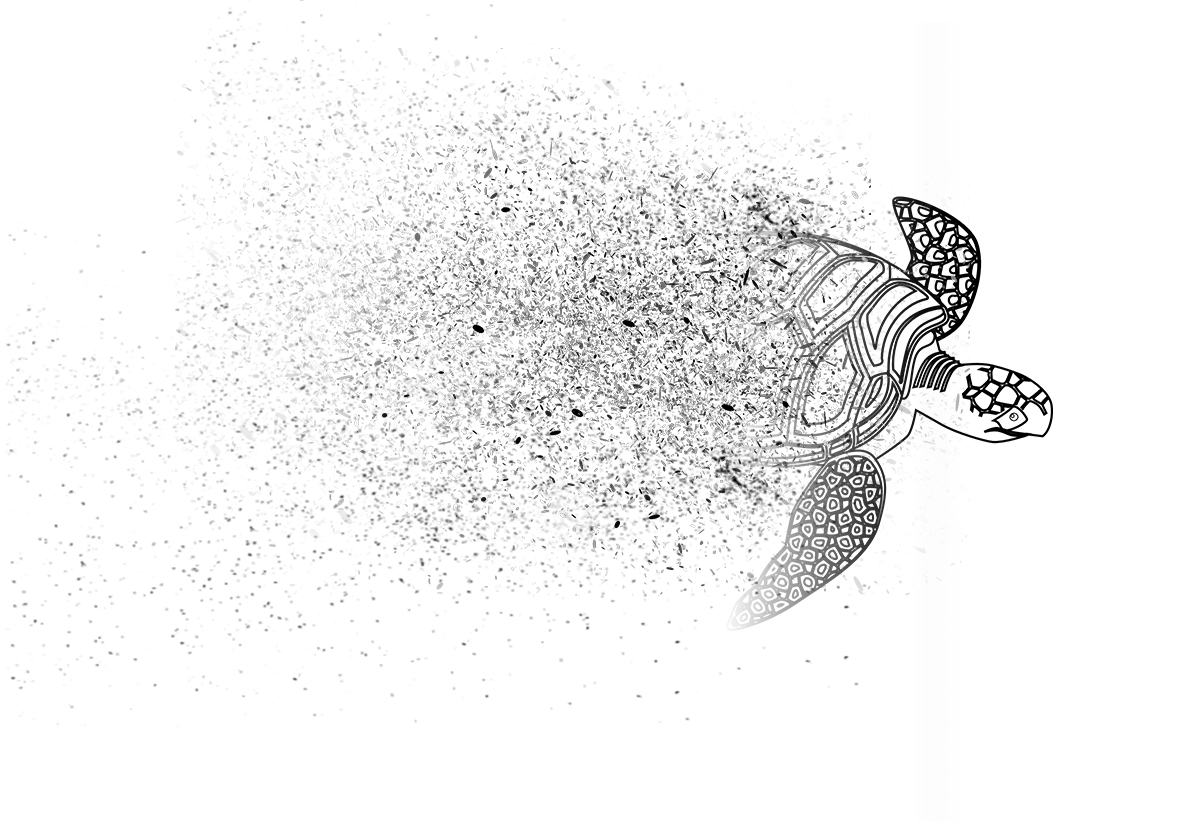
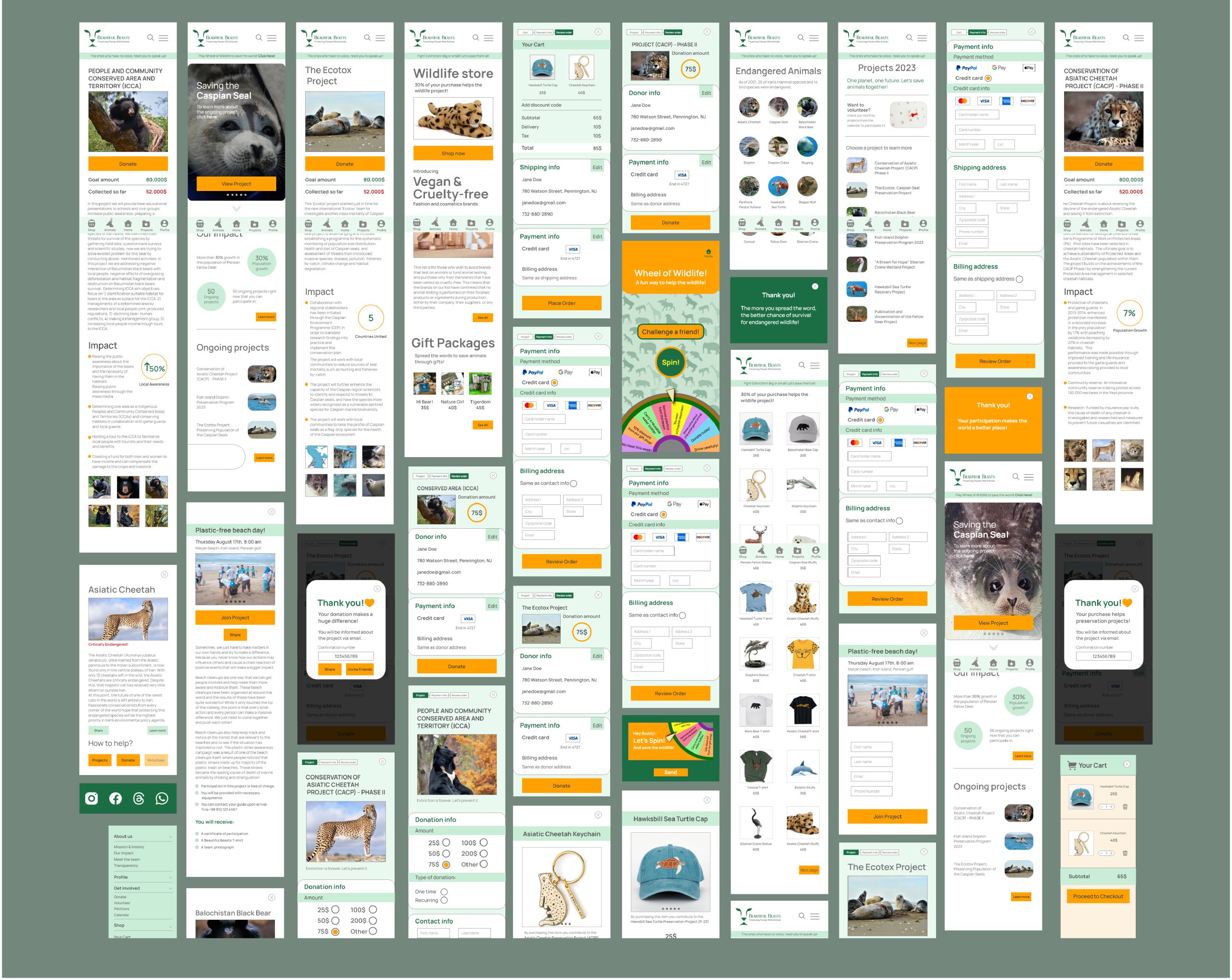
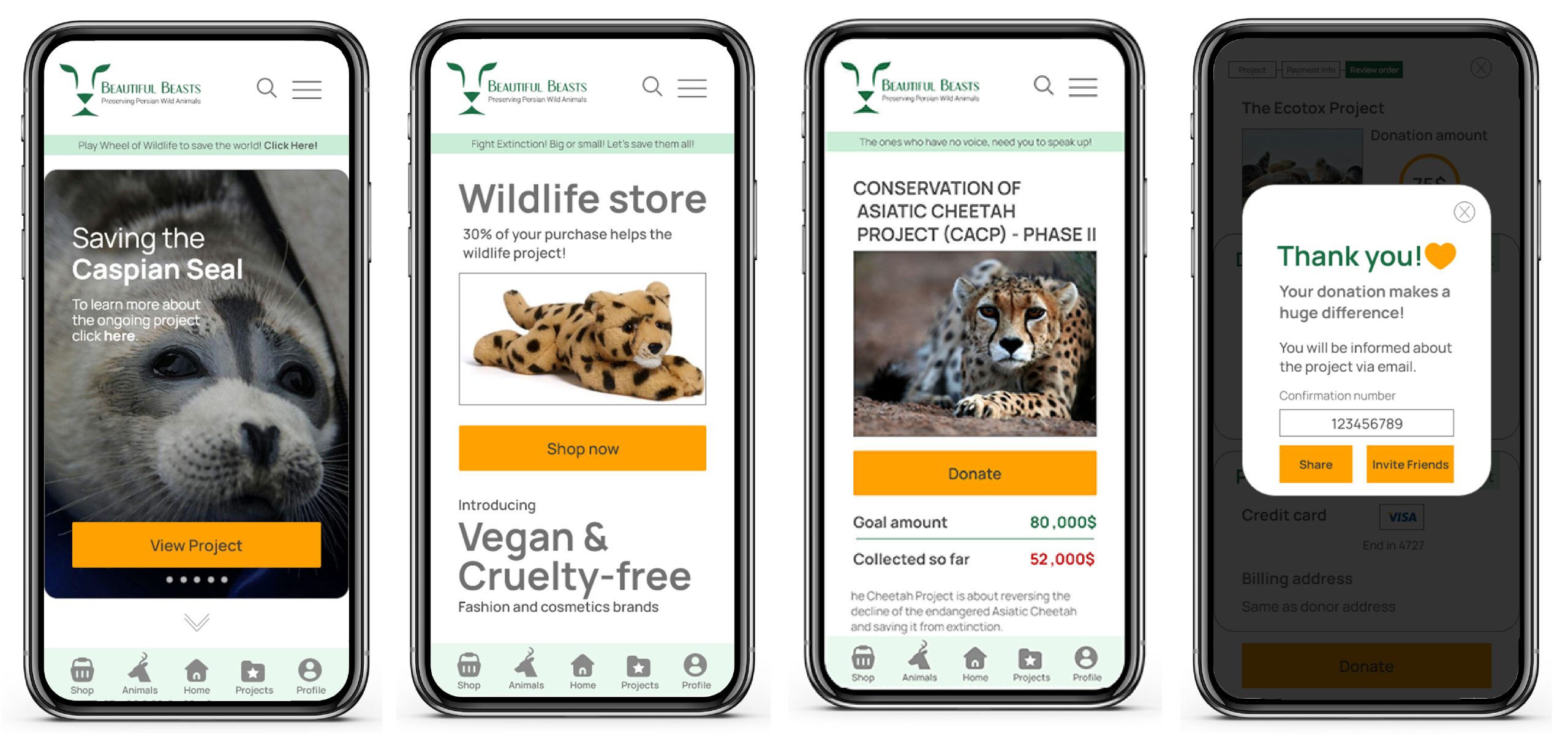
In order to make the overall experience of the app more engaging and encourage more people to participate and share, I designed a simple game of Wheel of Wildlife that resembles the Wheel of Fortune game. The results of spinning vary from simple environmental preservation instructions, to coupons and prizes from the Beautiful Beasts shop.
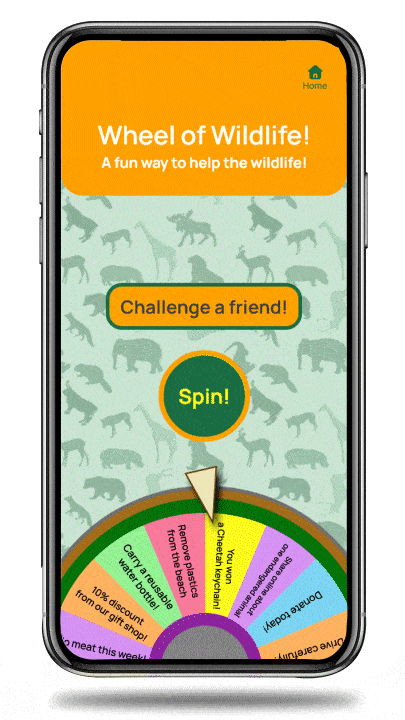
The designs for screen size variation included mobile, tablet, and desktop. I optimized the designs to fit specific user needs of each device and screen size because users tend to participate from a variety of devices and having a smooth transition was the goal.
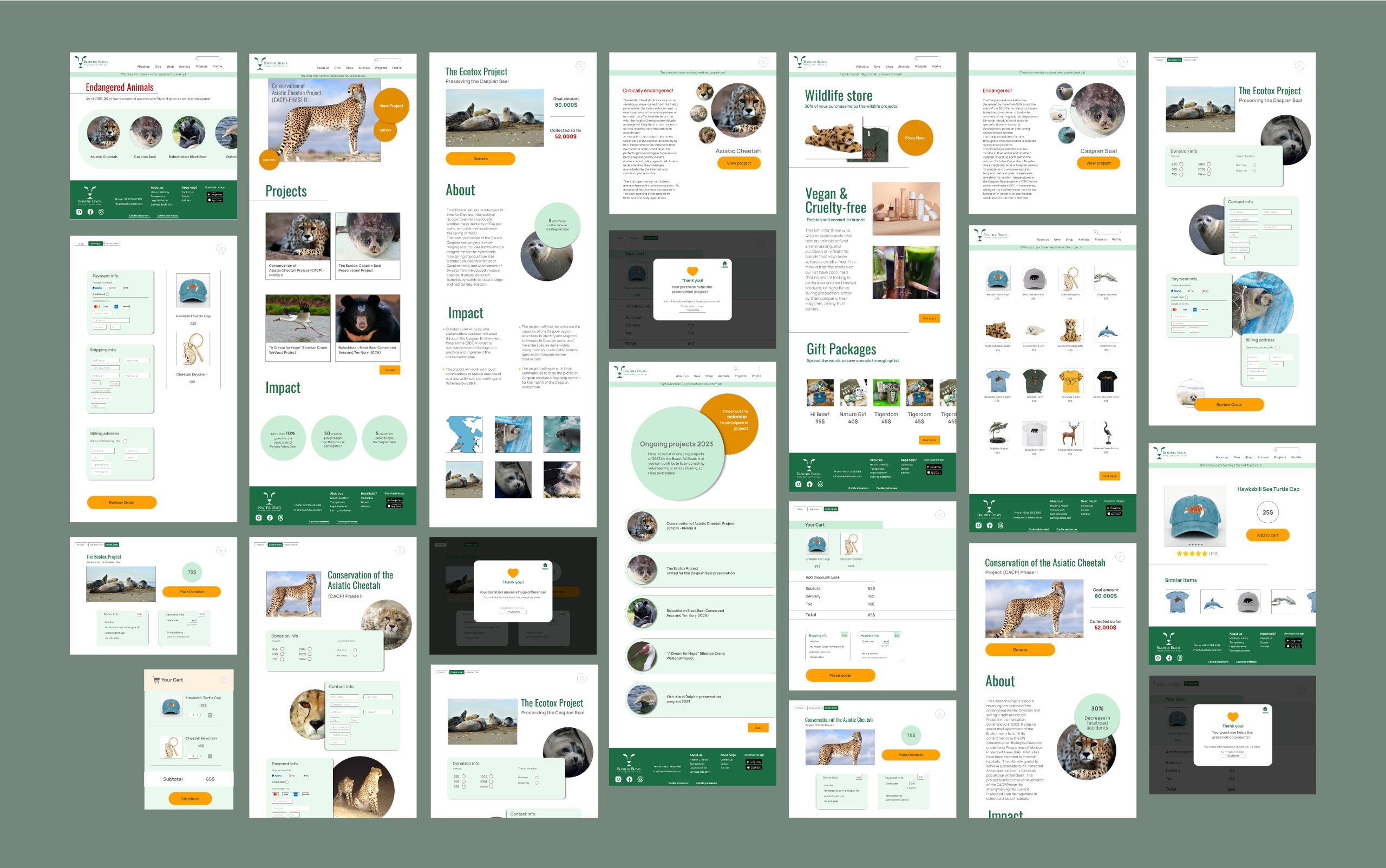
The high-fidelity prototype
followed the same user flow as the low-fidelity prototype, including design changes made after the usability study.
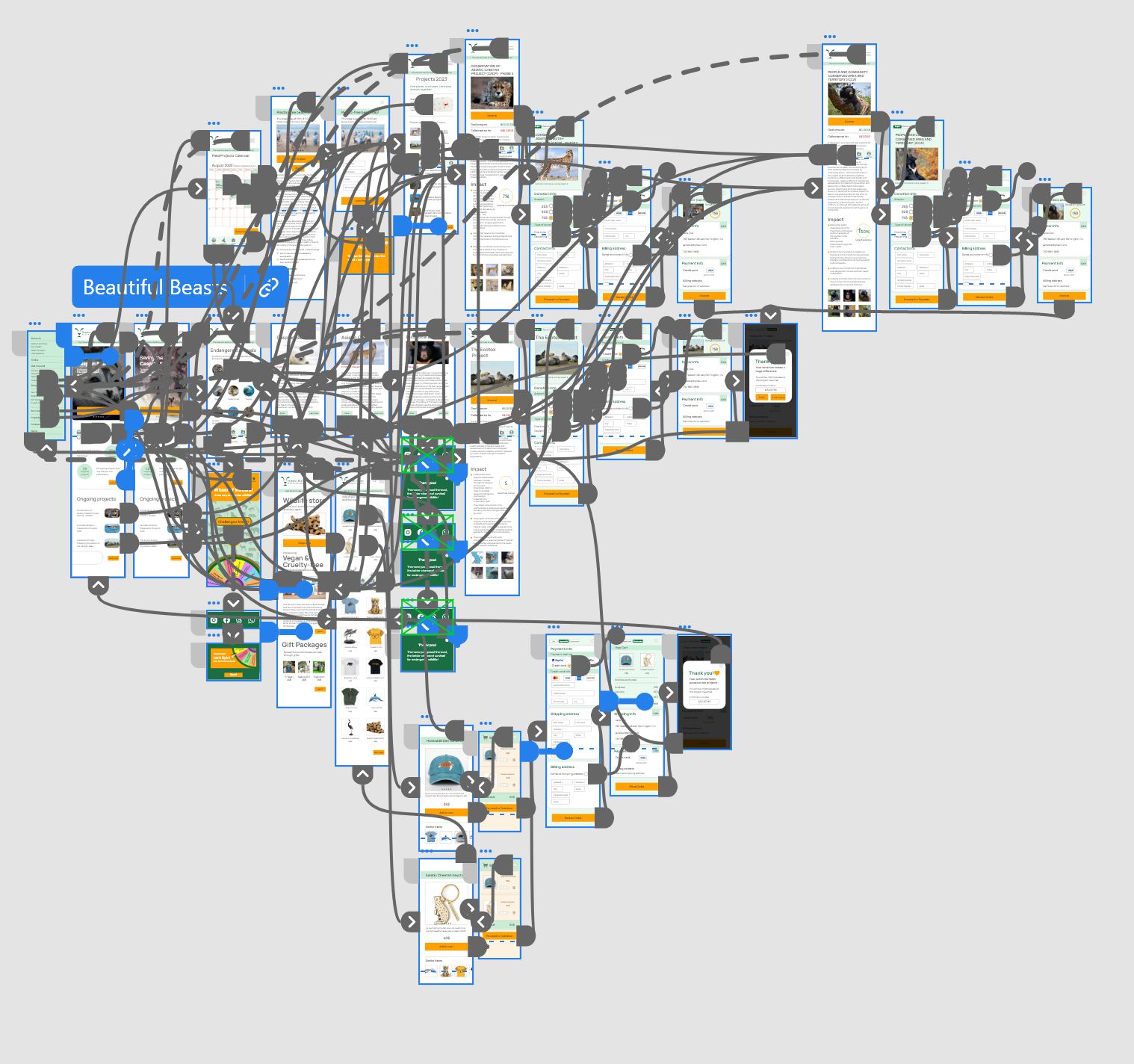
To view the app high-fidelity prototype click here.
